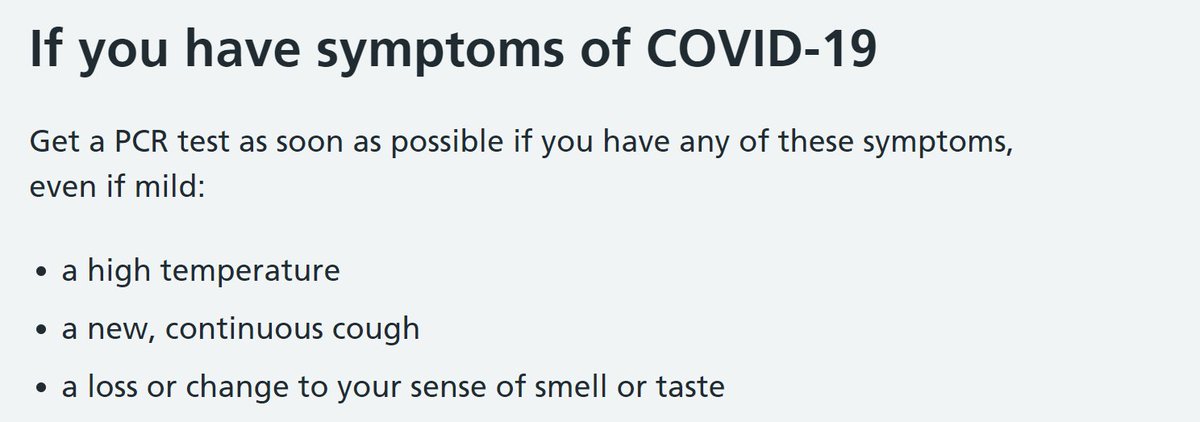THREAD on a quick Covid update (mainly England):
TLDR: two epidemics really - one in under 18s (and their parents) which is bad and getting worse and the other in everyone else which is getting better.
TLDR: two epidemics really - one in under 18s (and their parents) which is bad and getting worse and the other in everyone else which is getting better.
First - vaccine uptake in 12-15 year olds in England hasn't really started. With such high rates in teens right now this feels like a missed opportunity :-/
1/12
1/12

Looking at cases by date of test for each home nation, England and Wales are going up and NI and Scotland coming down. NI seems to be plateauing though.
England and Wales might be peaking (for now at least) 2/12
England and Wales might be peaking (for now at least) 2/12

Positivity rates are hard to interpret right now... PHE surveillance shows positivity rates in symptomatic people is dropping a lot...
BUT there is also a big surge in rhinovirus (a cold) - with similar symptoms to Covid. 3/12

BUT there is also a big surge in rhinovirus (a cold) - with similar symptoms to Covid. 3/12


So if you feel grotty (sore throat, cough, runny nose, headaches) - it might well be this circulating cold OR Covid. Please do a Covid test to be sure!
4/12
4/12
So where are the cases? Central and Southern Scotland, most of Wales & central NI have high cases.
In England, cases are are higehest in Midlands and North.
Graph from @TravellingTabby 5/12
In England, cases are are higehest in Midlands and North.
Graph from @TravellingTabby 5/12

And who? 10-14 yrs way out in front, followed by older teens & 5-9 year olds. Next biggest group (& only other rising group) are their parents' generation - 30-59 yr olds.
A year ago we had big uni spike. Will we see it again? *hopefully* not with vax & prev infections. 6/12
A year ago we had big uni spike. Will we see it again? *hopefully* not with vax & prev infections. 6/12

And it's *not* just more testing of teens. ONS infection survey (always a few days behind cases) reported 4.6% of (randomly sampled) secondary school children tested positive week to 25 Sept. 1 in 21 children.
This is higher than it's ever been (just under 4% in late Dec).
7/12
This is higher than it's ever been (just under 4% in late Dec).
7/12

Cases in 20 somethings dropping a lot and very low now - reaping the benefits of vaccination + some protection from previous infection too in unvaccinated. 8/12
The drop is mainly driven by declines in 18-84 yr olds. The only age group where hospital admissions are significantly climbing now (although low in absolute nums) are 6-17 year olds - school age kids.
1,744 6-17 yr olds have been admitted with Covid since 1 July. 10/12


1,744 6-17 yr olds have been admitted with Covid since 1 July. 10/12



The biggest hotspot right now is Kettering - over 6% of their 10-14 year olds tested positive in the last week!
Rates in 40-49 yr olds are higher than they've ever been...
It should peak soon in kids, but at the cost of so many infections... just as vax is starting. 11/12
Rates in 40-49 yr olds are higher than they've ever been...
It should peak soon in kids, but at the cost of so many infections... just as vax is starting. 11/12

should have said *relatively* very low. 200/100K/week still quite high!
We should have kept protections in schools. We should restore them now! Masks & contact tracing in secondary schools... Ventilation! Where are the promised CO2 monitors? And the support to act on their readings if too high? Govt has had months to prepare & done so little. 12/12
PS on getting a PCR test with symptoms that are not the "classic (outdated) triad" of temp, cough, loss of smell/taste (so e.g. sore throat, runny nose, headache) -> can get one after positive LFD test, or through logging yr symptoms on the Zoe symptom tracker app. 

• • •
Missing some Tweet in this thread? You can try to
force a refresh
























